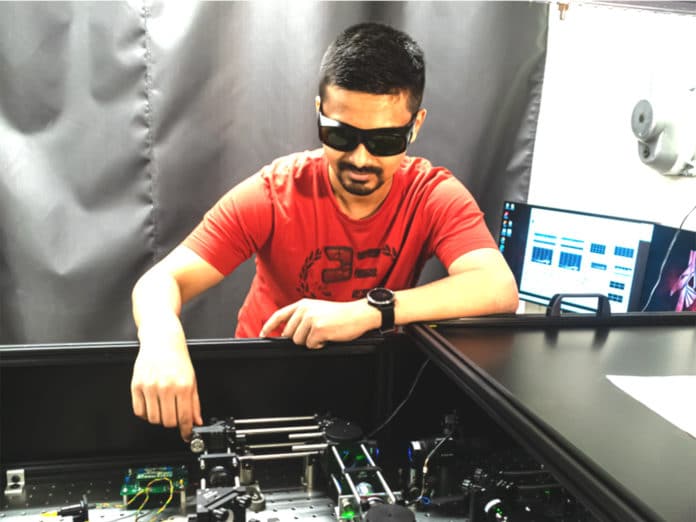A new study could prompt significant advances in the speed and cost of computers and bio-nano technologies, thanks to scientists from Simon Fraser University. They have designed the world’s fastest information-fueled engine that converts the random jiggling of a microscopic particle into stored energy.
Consisting of a microscopic particle immersed in water and attached to a spring which, itself, is fixed to a movable stage- the engine taps into a new kind of fuel—information. Scientists then observed the particle bouncing up and down due to thermal motion.
SFU physics professor and senior author John Bechhoefer says, “Understanding of how to rapidly and efficiently convert information into “work” may inform the design and creation of real-world information engines.”
“We wanted to find out how fast an information engine can go and how much energy it can extract, so we made one.”
SFU physics professor David Sivak said, “By systematically studying this engine, and choosing the right system characteristics, we have pushed its capabilities over ten times farther than other similar implementations, thus making it the current best-in-class.”
When a bouncing motion was observed, scientists move the stage up in response. When there was a downward bounce, they waited for some time. This ends uplifting the entire system using only information about the particle’s position.
lead author and Ph.D. student Tushar Saha said, “Repeating this procedure, they raise the particle “a great height, and thus store a significant amount of gravitational energy,” without having to pull on the particle directly.”
Saha further explains that “in the lab, we implement this engine with an instrument known as an optical trap, which uses a laser to create a force on the particle that mimics that of the spring and stage.”
Joseph Lucero, a Master of Science student, adds, “In our theoretical analysis, we find an interesting trade-off between the particle mass and the average time for the particle to bounce up. While heavier particles can store more gravitational energy, they generally also take longer to move up.”
Postdoctoral fellow Jannik Ehrich said, “Guided by this insight, we picked the particle mass and other engine properties to maximize how fast the engine extracts energy, outperforming previous designs and achieving power comparable to molecular machinery in living cells, and speeds comparable to fast-swimming bacteria.”
Journal Reference:
- Tushar K. Saha et al., Maximizing power and velocity of an information engine, Proceedings of the National Academy of Sciences (2021). DOI: 10.1073/pnas.2023356118
